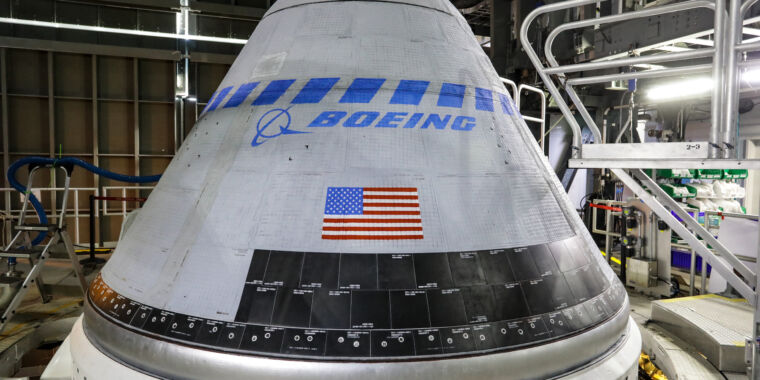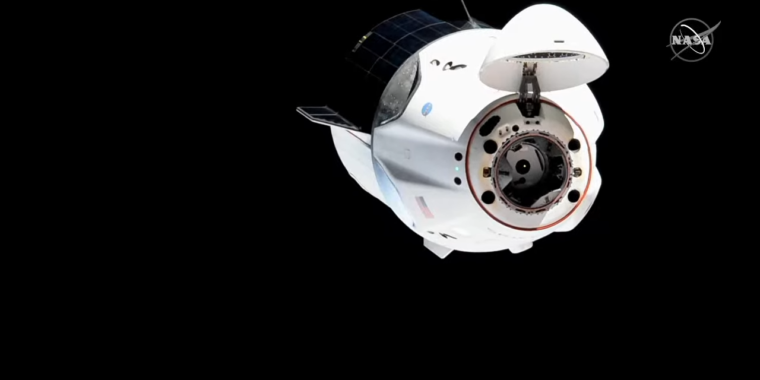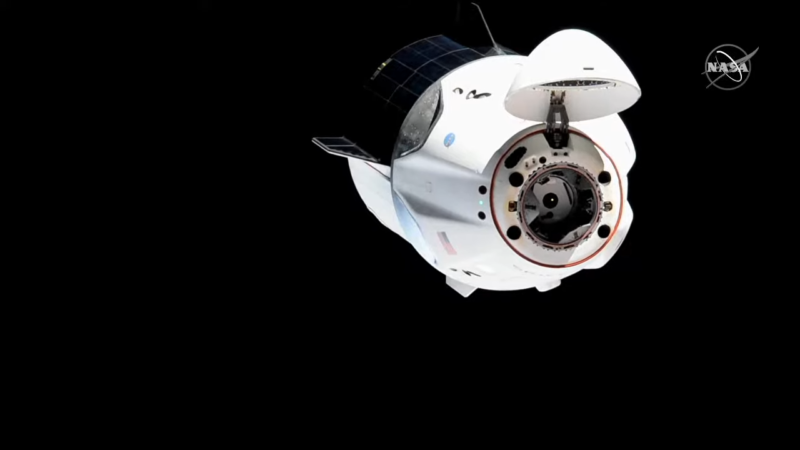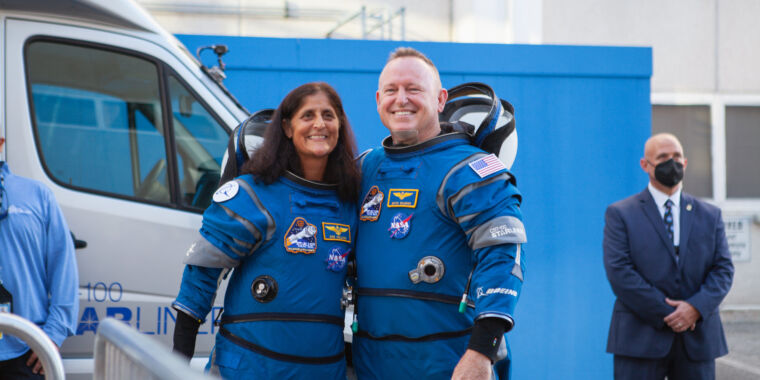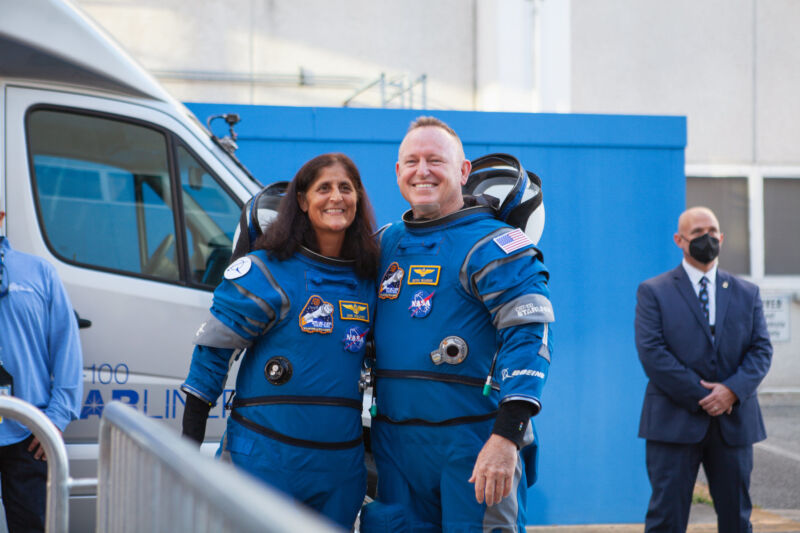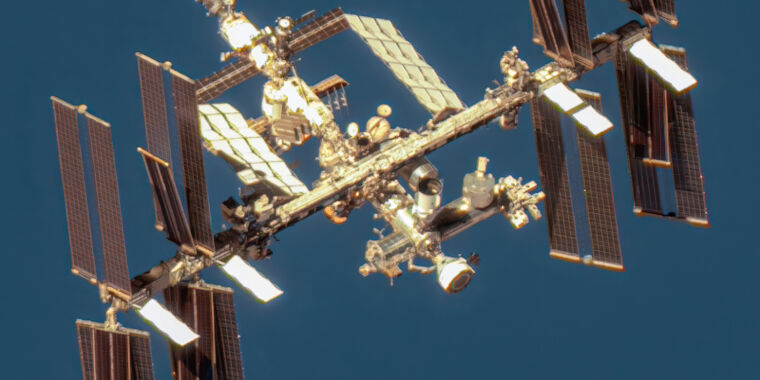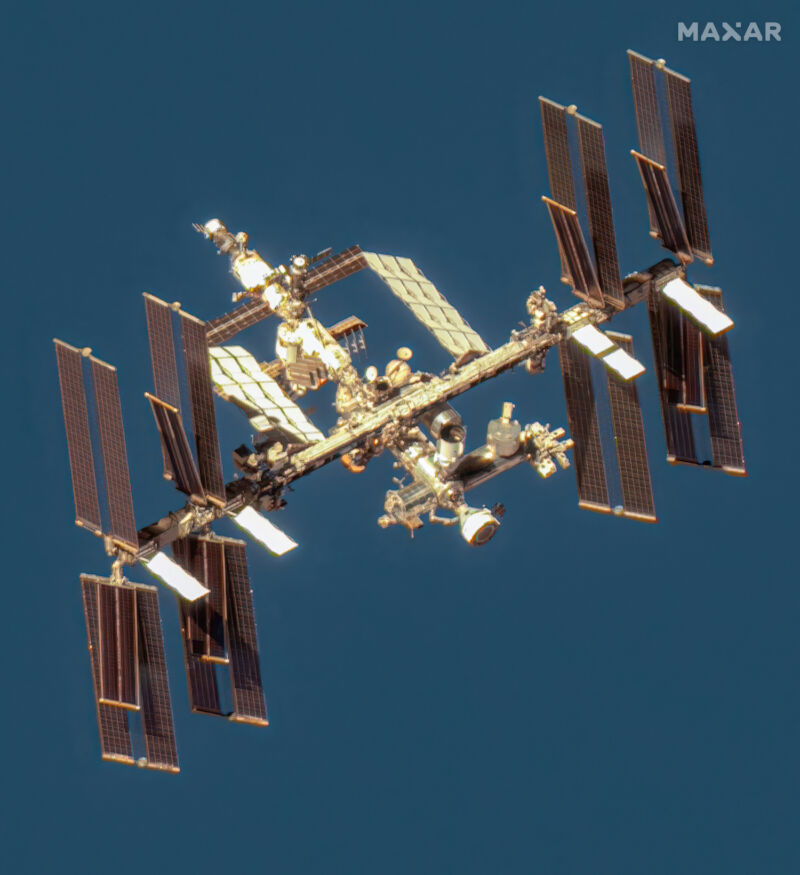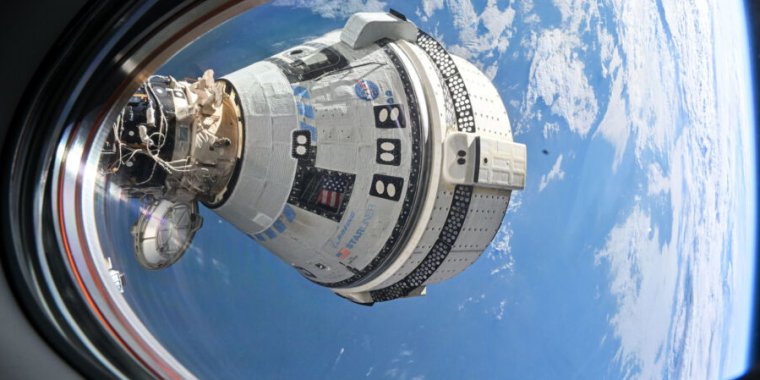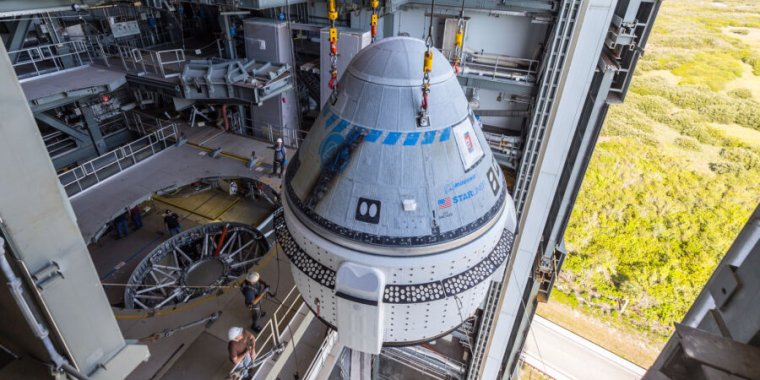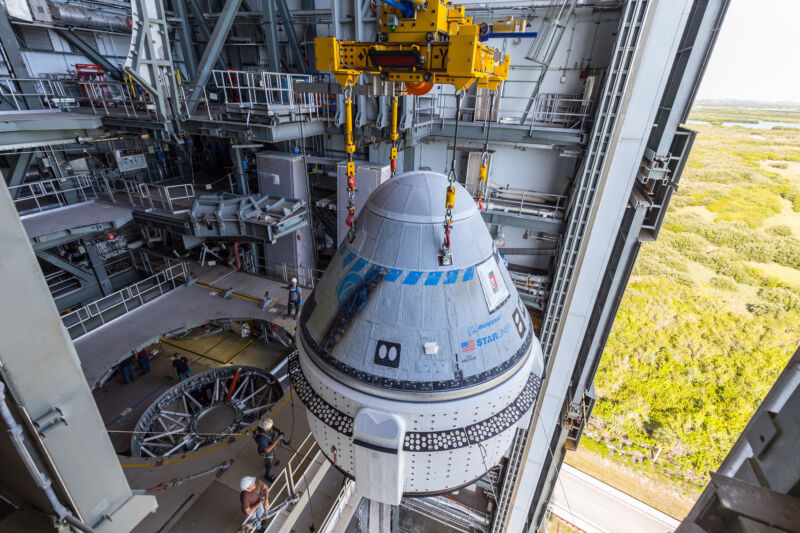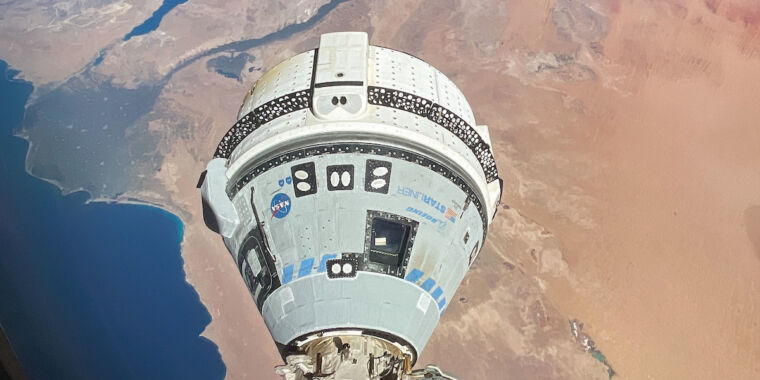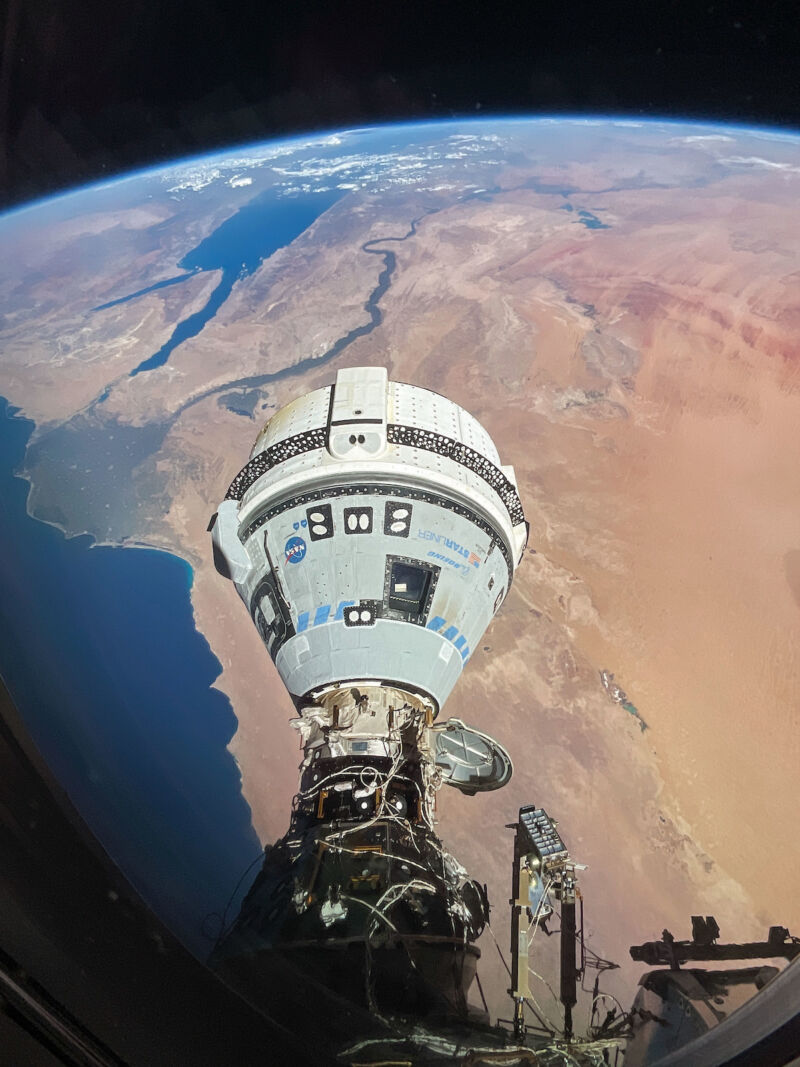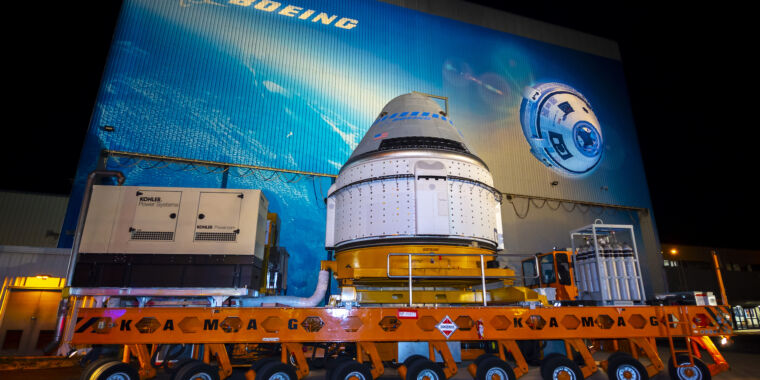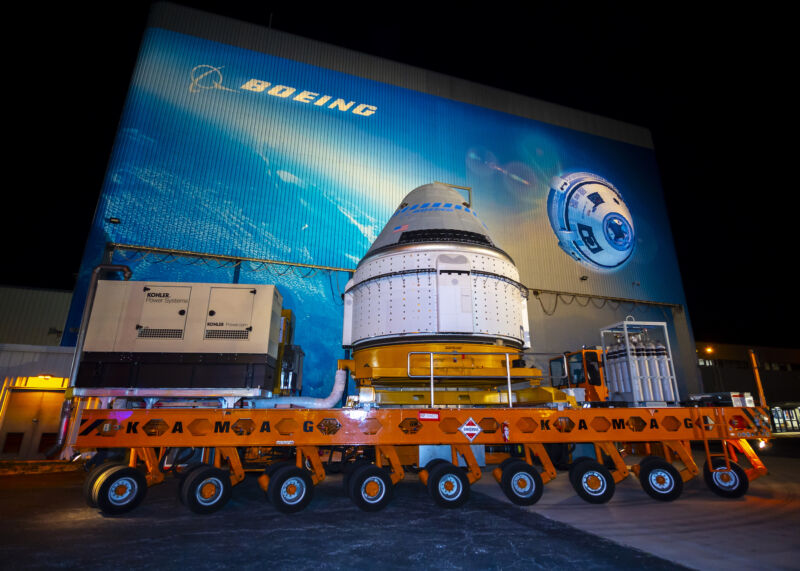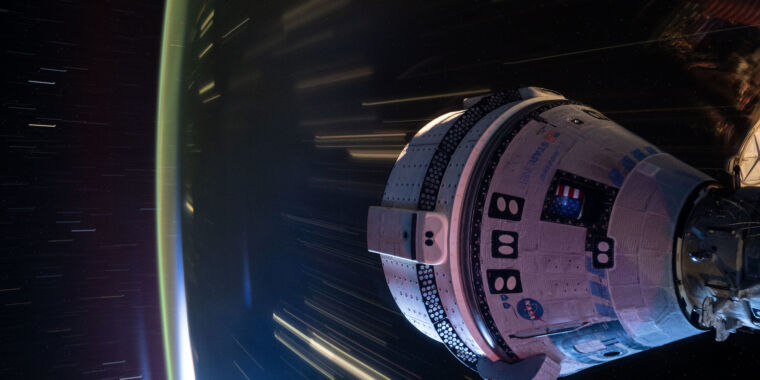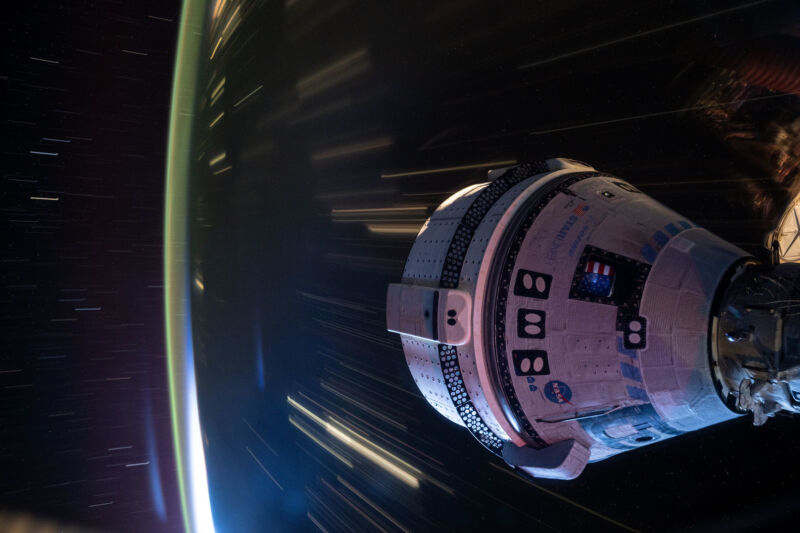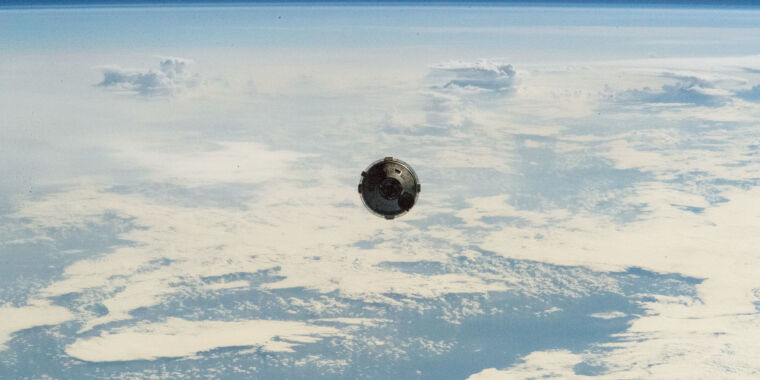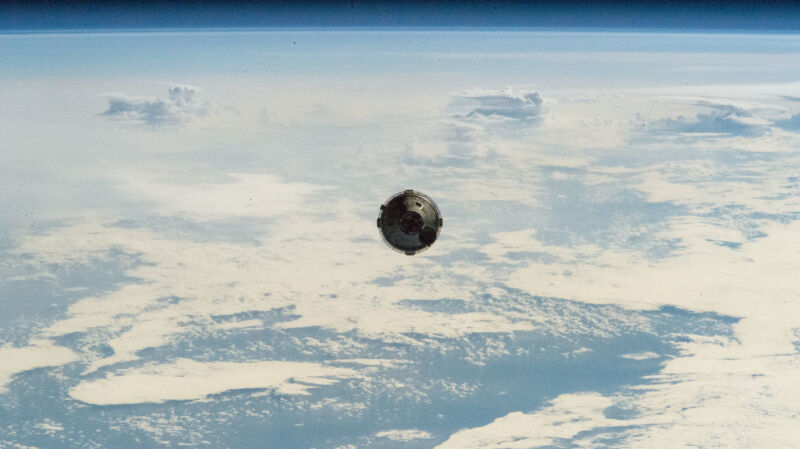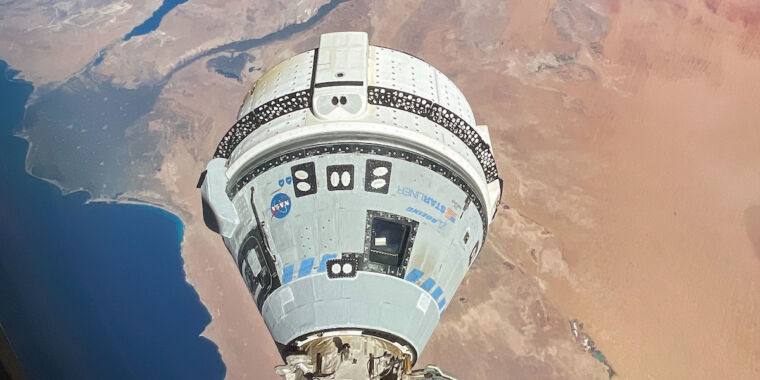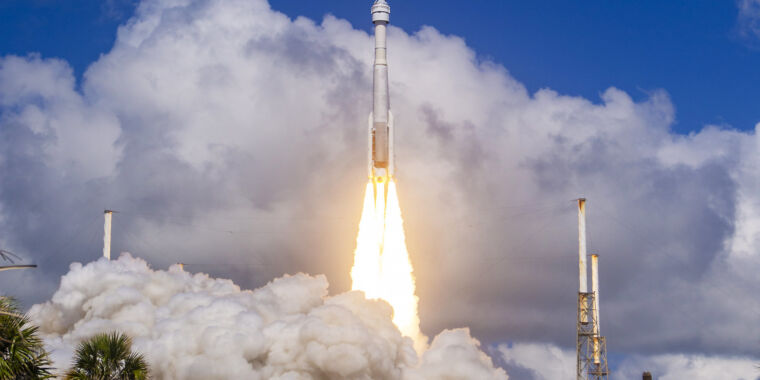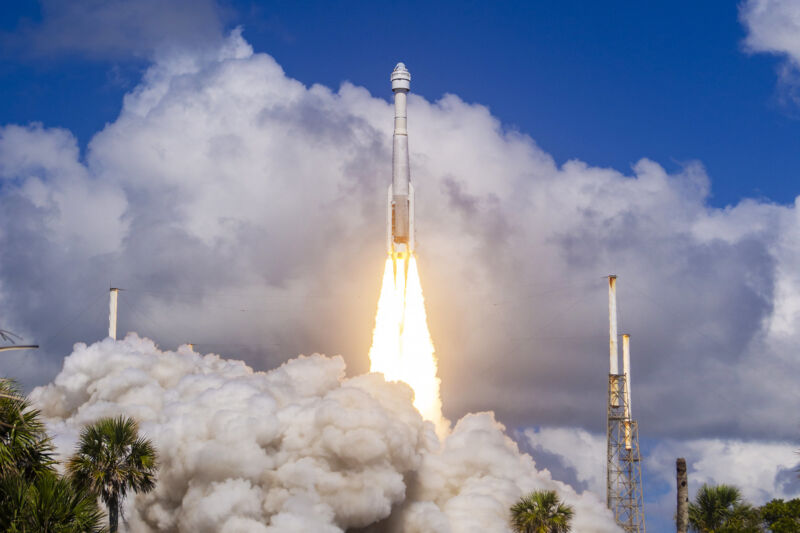NASA’s Starliner decision was the right one, but it’s a crushing blow for Boeing
Falling short —
It’s unlikely Boeing can fly all six of its Starliner missions before retirement of the ISS in 2030.
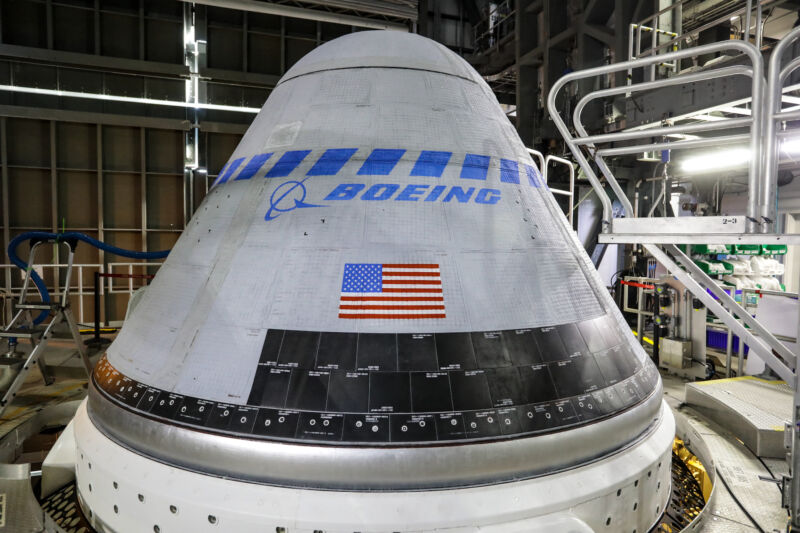
Enlarge / A Starliner spacecraft mounted on top of an Atlas V rocket before an unpiloted test flight in 2022.
Ten years ago next month NASA announced that Boeing, one of the agency’s most experienced contractors, won the lion’s share of government money available to end the agency’s sole reliance on Russia to ferry its astronauts to and from low-Earth orbit.
At the time, Boeing won $4.2 billion from NASA to complete development of the Starliner spacecraft and fly a minimum of two, and potentially up to six, operational crew flights to rotate crews between Earth and the International Space Station (ISS). SpaceX won a $2.6 billion contract for essentially the same scope of work.
A decade later the Starliner program finds itself at a crossroads after Boeing learned it will not complete the spacecraft’s first Crew Flight Test with astronauts onboard. NASA formally decided Saturday that Butch Wilmore and Suni Williams, who launched on the Starliner capsule June 5, will instead return to Earth inside a SpaceX Crew Dragon spacecraft. Put simply, NASA isn’t confident enough in Boeing’s spacecraft after it suffered multiple thrusters failures and helium leaks on the way to the ISS.
So where does this leave Boeing with its multibillion contract? Can the company fulfill the breadth of its commercial crew contract with NASA before the space station’s scheduled retirement in 2030? It now seems that there is little chance of Boeing flying six more Starliner missions without a life extension for the ISS. Tellingly, perhaps, NASA has only placed firm orders with Boeing for three Starliner flights once the agency certifies the spacecraft for operational use.
Boeing’s bottom line
Although Boeing did not make an official statement Saturday on its long-term plans for Starliner, NASA Administrator Bill Nelson told reporters he received assurances from Boeing’s new CEO, Kelly Ortberg, that the company remains committed to the commercial crew program. And it will take a significant commitment from Boeing to see it through. Under the terms of its fixed price contract with NASA, the company is on the hook to pay for any expenses to fix the thruster and helium leak problems and get Starliner flying again.
Boeing has already reported $1.6 billion in charges on its financial statements to pay for delays and cost overruns on the Starliner program. That figure will grow as the company will likely need to redesign some elements in the spacecraft’s propulsion system to remedy the problems encountered on the Crew Flight Test (CFT) mission. NASA has committed $5.1 billion to Boeing for the Starliner program, and the agency has already paid out most of that funding.
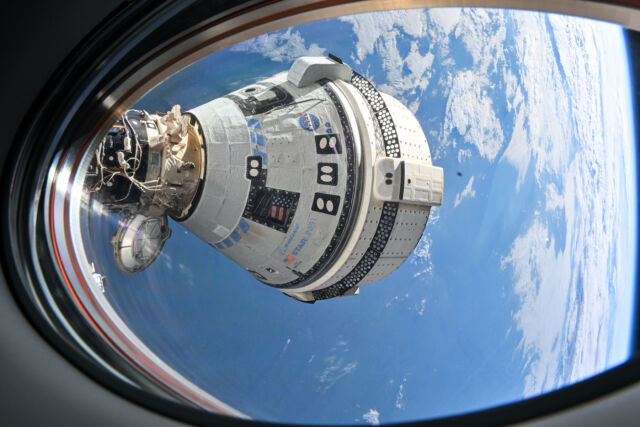
Enlarge / Boeing’s Starliner spacecraft, seen docked at the International Space Station through the window of a SpaceX Dragon spacecraft.
The next step for Starliner remains unclear, and we’ll assess that in more detail later in the story. Had the Starliner test flight ended as expected, with its crew inside, NASA targeted no earlier than August 2025 for Boeing to launch the first of its six operational crew rotation missions to the space station. In light of Saturday’s decision, there’s a high probability Starliner won’t fly with astronauts again until at least 2026.
Starliner safely delivered astronauts Butch Wilmore and Suni Williams to the space station on June 6, a day after their launch from Cape Canaveral Space Force Station, Florida. But five of the craft’s 28 reaction control system thrusters overheated and failed as it approached the outpost. After the failures on the way to the space station, NASA’s engineers were concerned Starliner might suffer similar problems, or worse, when the control jets fired to guide Starliner on the trip back to Earth.
On Saturday, senior NASA leaders decided it wasn’t worth the risk. The two astronauts, who originally planned for an eight-day stay at the station, will now spend eight months on the orbiting research lab until they come back to Earth with SpaceX.
If it’s not a trust problem, is it a judgement issue?
Boeing managers had previously declared Starliner was safe enough to bring Wilmore and Williams home. Mark Nappi, Boeing’s Starliner program manager, regularly appeared to downplay the seriousness of the thruster issues during press conferences throughout Starliner’s nearly three-month mission.
So why did NASA and Boeing engineers reach different conclusions? “I think we’re looking at the data and we view the data and the uncertainty that’s there differently than Boeing does,” said Jim Free, NASA’s associate administrator, and the agency’s most senior civil servant. “It’s not a matter of trust. It’s our technical expertise and our experience that we have to balance. We balance risk across everything, not just Starliner.”
The people at the top of NASA’s decision-making tree have either flown in space before, or had front-row seats to the calamitous decision NASA made in 2003 to not seek more data on the condition of space shuttle Columbia’s left wing after the impact of a block of foam from the shuttle’s fuel tank during launch. This led to the deaths of seven astronauts, and the destruction of Columbia during reentry over East Texas. A similar normalization of technical problems, and a culture of stifling dissent, led to the loss of space shuttle Challenger in 1986.
“We lost two space shuttles as a result there not being a culture in which information could come forward,” Nelson said Saturday. “We have been very solicitous of all of our employees that if you have some objection, you come forward. Spaceflight is risky, even at its safest, and even at its most routine. And a test flight by nature is neither safe nor routine. So the decision to keep Butch and Suni aboard the International Space Station and bring the Starliner home uncrewed is the result of a commitment to safety.”
Now, it seems that culture may truly have changed. With SpaceX’s Dragon spacecraft available to give Wilmore and Williams a ride home, this ended up being a relatively straightforward decision. Ken Bowersox, head of NASA’s space operations mission directorate, said the managers polled for their opinion all supported bringing the Starliner spacecraft back to Earth without anyone onboard.
However, NASA and Boeing need to answer for how the Starliner program got to this point. The space agency approved the launch of the Starliner CFT mission in June despite knowing the spacecraft had a helium leak in its propulsion system. Those leaks multiplied once Starliner arrived in orbit, and are a serious issue on their own that will require corrective actions before the next flight. Ultimately, the thruster problems superseded the seriousness of the helium leaks, and this is where NASA and Boeing are likely to face the most difficult questions moving forward.

Enlarge / NASA astronauts Butch Wilmore and Suni Williams aboard the International Space Station.
Boeing’s previous Starliner mission, known as Orbital Flight Test-2 (OFT-2), successfully launched in 2022 and docked with the space station, later coming back to Earth for a parachute-assisted landing in New Mexico. The test flight achieved all of its major objectives, setting the stage for the Crew Flight Test mission this year. But the spacecraft suffered thruster problems on that flight, too.
Several of the reaction control system thrusters stopped working as Starliner approached the space station on the OFT-2 mission, and another one failed on the return leg of the mission. Engineers thought they fixed the problem by introducing what was essentially a software fix to adjust timing and tolerance settings on sensors in the propulsion system, supplied by Aerojet Rocketdyne.
That didn’t work. The problem lay elsewhere, as engineers discovered during testing this summer, when Starliner was already in orbit. Thruster firings at White Stands, New Mexico, revealed a small Teflon seal in a valve can bulge when overheated, restricting the flow of oxidizer propellant to the thruster. NASA officials concluded there is a chance, however small, that the thrusters could overheat again as Starliner departs the station and flies back to Earth—or perhaps get worse.
“We are clearly operating this thruster at a higher temperature, at times, than it was designed for,” said Steve Stich, NASA’s commercial crew program manager. “I think that was a factor, that as we started to look at the data a little bit more carefully, we’re operating the thruster outside of where it should be operated at.”
NASA’s Starliner decision was the right one, but it’s a crushing blow for Boeing Read More »
